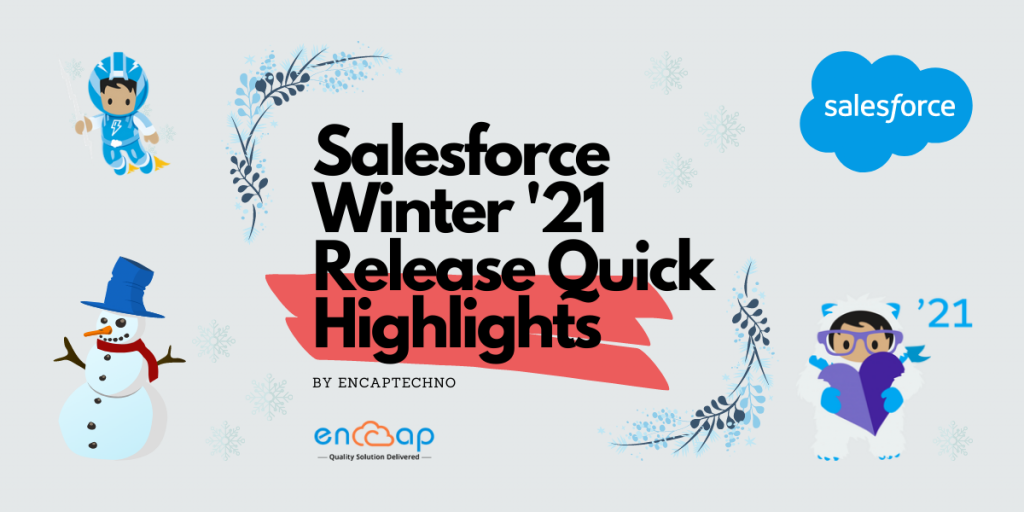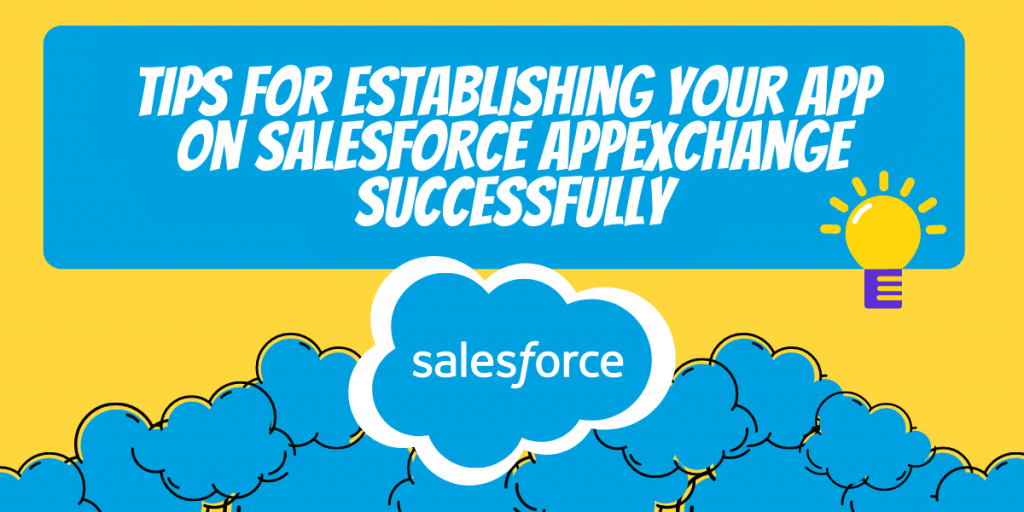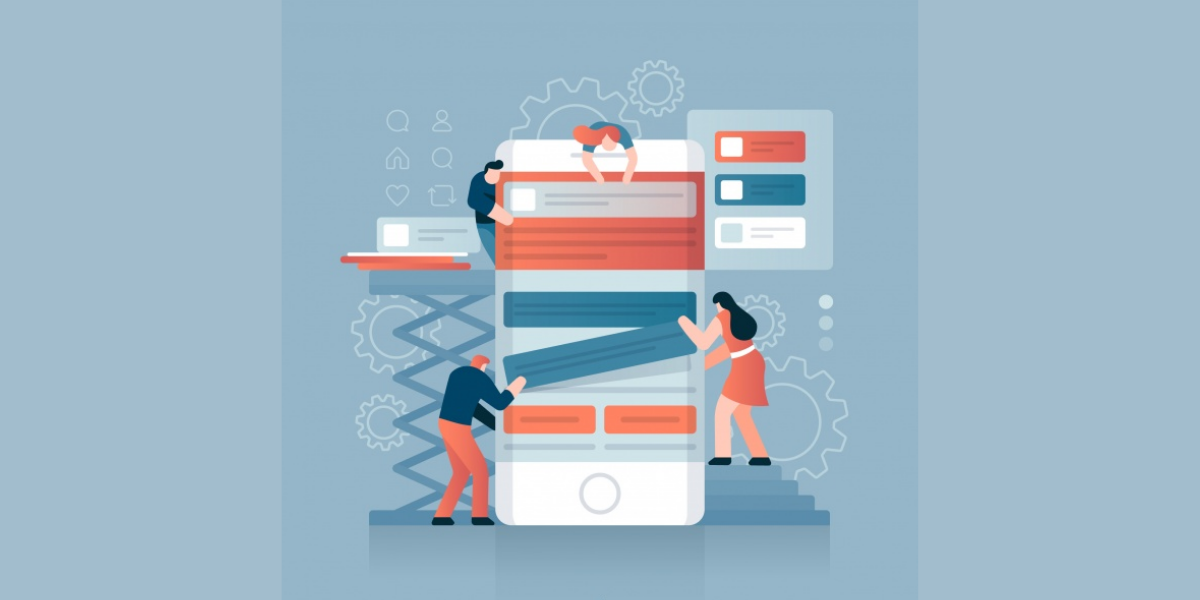Salesforce Winter ’21 Release Quick Highlights
Salesforce has released its Winter ’21 release while introducing many new features that offer various benefits. The CRM team has put together highlights from this new release so that they can help the developers in understanding and working with them in a better way. The features that have been introduced in the Salesforce Winter ’21 release are focused on enhancing the user experience with the sole objective to make everything more productive.
One of the key differentiators of every Salesforce release is the innovation and feature upgrades that the company introduces. It is because of these changes that Salesforce attracts customers relentlessly. In case you are a Salesforce customer, you must use the new functionality available from every update to make the most out of what is available.
The core philosophy is to have a thriving CRM system by adopting a continuous improvement and leveraging upgrades that are delivered to make the most of the CRM investment. The only thing is that with the sheer number of fixes, changes, and additions, the Salesforce developers can often get overwhelmed when they are busy with everyday work.
In this blog, we will be listing some of the most important and top Salesforce Winter ’21 Release quick highlights for your attention:
1. Dynamic Forms
In the new release, the feature of Dynamic Forms helps the Salesforce instances for lightning. This offers multiple benefits because it enables the admins to form sections of a page and fields that can be used as components for the lightning app builder which then helps in configuring and giving the users access to sections and fields just as needed. There is no longer a need for blocks of fields on a record page.
The feature of Dynamic forms in the new Salesforce release helps in enhancing the way in which the users interact with the record pages. It increases the load time of the page, helps in easily managing the fields and sections on pages with no need for using the page layout editor, and also reduces the page layouts as needed. In the new feature, the dynamic forms are enabled for each org, so one can start setting them up from the lightning app builder.
In the component palette of the lightning app builder, the field section and the components of the field are now available to create the dynamic forms. You can begin by opening an existing record page in the lightning app builder and then clicking the upgrade now from the record detail properties to launch the Dynamic Forms migration wizard that helps to add fields and different field sections to pages. On the other hand, you can also create new pages from scratch.
It is recommended to reconsider your page design set up by leveraging the dynamic forms, particularly when you see multiple record types. You can get in touch with Salesforce implementation partners if you need assistance in setting up this feature or redesigning the pages.
2. Lightning Components
Many people have built Aura and Lightning Web Components by now and most of this logic runs on the Aura Enables Apex methods that reside in the controller classes. In the Salesforce Winter ’21 release, if you want to successfully communicate with the Apex method, the user should have an appropriate Apex class enabled on the profile or a permission set.
The fact this applies to all the components, even the new and the existing ones may require the profile changes to maintain great functionality. Fortunately, it is simple to add permissions. All you have to do is open up a profile or even permission to set and select the Apex Classes section to add the controller class to the list. In case you have been managing the profiles and permissions with the help of managed packages, the new release makes it great for you to begin.
3. Analyze Lightning Page
Analyzing the lightning page is a simple feature for the admins that helps them to utilize and vastly improve the loading time of the lightning pages. With the help of analyzing features, you can quickly understand what causes longer load times than usual.
Besides this, you can also receive quick recommendations for any improvements with a simple click of a button. For using this feature properly, you can go to the lightning app builder, click on the Analyze button so that the pages begin the evaluation. The pages are then analyzed based on the fields related to the list components and the metadata of a record page.
4. Apply Audience to the Record Detail Page
Many communities require additional customization because they are external facing. Due to this new update extending the customization to the record detail page, the previously customizable feature through the use of record types gets triumphed.
Additionally, you can now vary with what people see on a record detail page using the audience criteria based on the record fields. For instance; it is possible to display multiple theme layouts or different pages for high-value or low-value opportunities. Also, the record criterion is further moved from the advanced section to the main body of the editor section which helps in easy combination with user criteria to create the custom formulas.
5. Updated Highlights Panel
A simple but very useful update that can help the users to become considerably efficient is the updated highlights panel on the record page. It helps in making the users see more record information on a highlights panel when they move over a lookup relationship field. This is when you hover over the accounting field on an opportunity.
There isn’t a required setup for this kind of feature because it will be automatically turned and displayed in the first few fields on the compact layout. The users are no longer required to go to the related records for seeing more details.
6. Customizing User Search Results
With the new Salesforce release, Einstein search can help in personalizing all that is returned by the re-ranking of the results so that they can be made more relevant to the individual user.
The results are evaluated based on factors such as recent user activity, ownership of records, and geographic location. Anyone who uses performance, enterprise, professional and unlimited editions in lightning can begin using this feature.
For turning on the Salesforce Einstein Search, go to the quick find box in the setup and typing and selecting, “Enable Einstein Search”. Further, select all of the three checkboxes to enable the search. This feature is very quick, simple to turn on, and easily delivers personalized results to the users making everything more efficient.
7. Creating Engaging Email Templates
The users can create engaging email templates very quickly by using the new email template builder offered by Salesforce. The new builder enables one to quickly build templates using the drag and drop functionality instead of the HTML code.
In addition, the drag and drop functionality also enhances the speed of the entire process of creating engaging and visually attractive email templates for the sales team that can be sent to the clients. The builder is now available for all editions of Sales Cloud in lightning as well as editions in Pardot using the Pardot Lightning app.
For accessing the builder or for creating and editing the email templates, the users should have access to lightning content builder or they should also be managing the content builder permissions.
8. Composite Graph APIs
This highlight is no less than a game-changer for anybody who is working with the Salesforce API. The new composite graph API helps the developers to create complex requests while combining numerous operations that don’t have to be related to each other within a single transaction.
It is also possible to define an all-or-nothing behaviour while not having to worry about any rolling back of data in case a multi-step operation fails midway. This only means that one can perform multiple actions in just a single API call and in just a single transaction. Some of the potential efficiency gains for the API heavy implementations are highly authentic.
9. Outlook Integration
Some of the important changes for email integration in the Winter 21 Salesforce release lead the Einstein Activity Capture to replace the lightning sync. In case you are already using the lightning sync, you can keep using the product. However, implementing Einstein will leverage improved integration and new functionality. The new Einstein Activity Capture features help in setting up and improving syncing behavior for ensuring the right record in automatic syncing.
Besides this, it is also possible to control sharing settings on emails by providing unlimited access. The insights dashboard empowered with analytics helps in diving into records syncing and creating email insights based on the information synced with Salesforce.
The Salesforce Einstein also helps in creating around ten custom insights as they look for keywords and highlight them in the activity panel. This is a great benefit because it helps the users to take action at a time when it is most relevant.
10. Displaying Survey Pages
The Salesforce Surveys allows an ability to create a unique customer journey by defining which survey page is used for skipping to next based on the Salesforce data.
You can let the data in the Salesforce org determine which survey page participants should view next. Besides this, variables can be used to define conditions in a page for branching logic. Further, using associated records merge field variables and participants record merge field variables help in defining the first level conditions. Using the org variables defines conditions based on org’s information and the custom variables define conditions based on values that one defines.
Conclusion
The Salesforce Winter ’21 release brings multiple features to the table that are extremely helpful. In case you need support with implementing any of the Winter ’21 releases, a Salesforce implementation partner like Encaptechno that comes with extensive knowledge, previous experience in facilitating customer success, and offering a comprehensive experience can help a lot.
Contact Encpatechno today to get immediate support in implementing the Salesforce winter release today and get things going.
Salesforce Winter ’21 Release Quick Highlights Read More »
CRM Services








